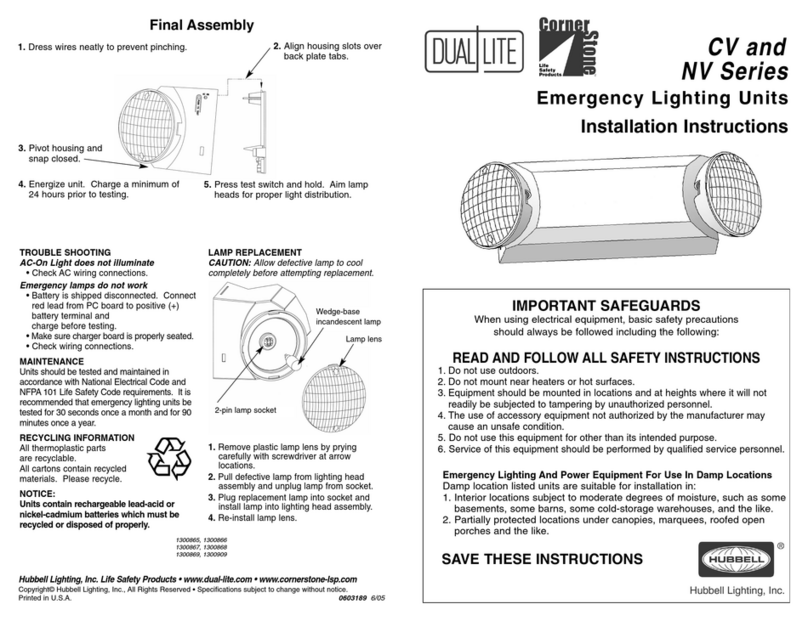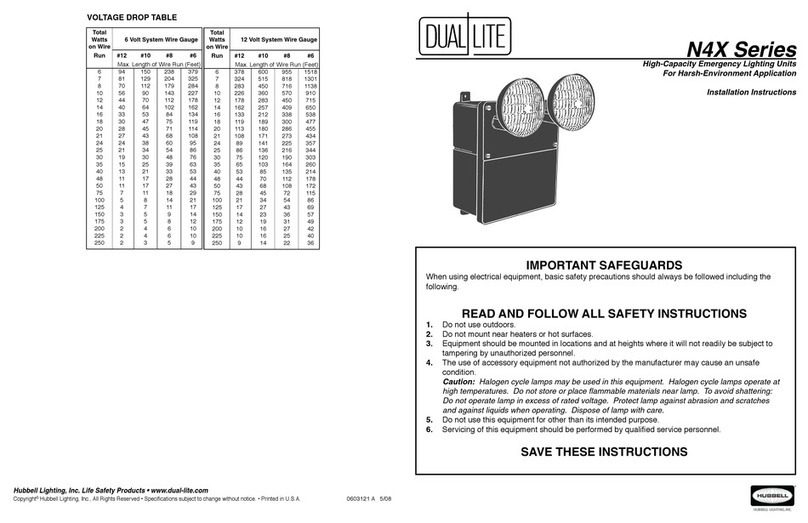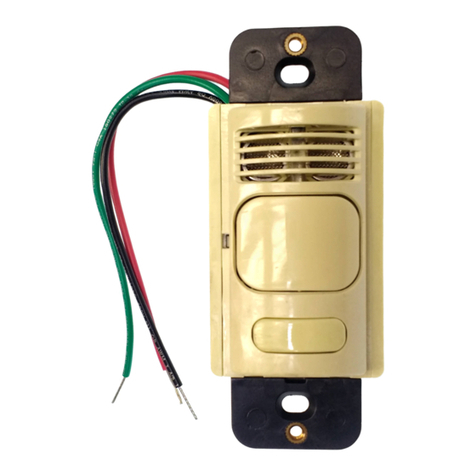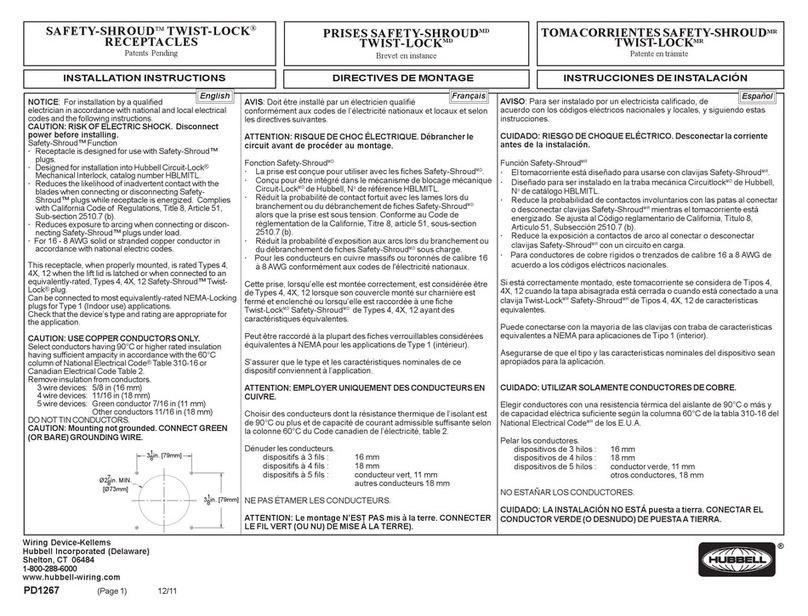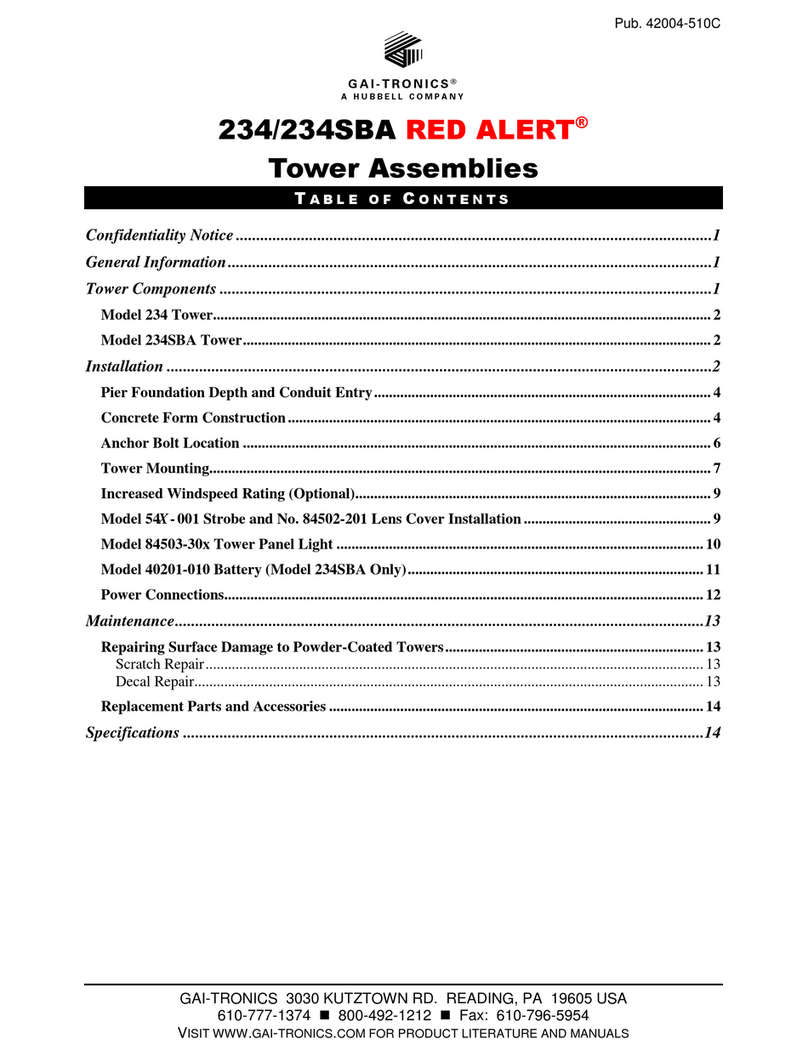
LightHAWK®Dimming Wall Switch Occupancy Sensors
INSTALLATION GUIDE
1121B 070218
701 Millennium Blvd. | Greenville, SC 29607 | (864) 678-1000 | (866) 898-0131 - fax www.hubbellcontrolsolutions.com
Copyright © 2018 Hubbell Control Solutions, a division of Hubbell Lighting, Inc. All rights reserved. All product and company names,
logos and product identiers are trademarks ™ or registered trademarks ® of Hubbell Lighting, Inc. or their respective owners.
Use of them does not necessarily imply any aliation with or endorsement by such respective owners.
72-00533 Rev B
PRECAUTIONS
• CAUTION: RISK OF ELECTRICAL SHOCK. Turn power o at service panel before beginning installation. Never wire energized electrical
components.
• Read and understand all instructions before beginning installation.
• NOTICE: For installation by a licensed electrician in accordance with National and/or local Electrical Codes and the following instructions.
• NOTICE: For indoor use only.
• CAUTION: USE COPPER CONDUCTOR ONLY
• Conrm device ratings are suitable for application prior to installation. Use of device in applications beyond its specied ratings or in
applications other than its intended use may cause an unsafe condition and will void manufacturer’s warranty.
• NOTICE: Do not install if product appears to be damaged.
• NOTICE: Connect to eld wiring rated for 60°C or greater.
• SAVE THESE INSTRUCTIONS!
DESCRIPTION
The LightHAWK2 Dimming Wall Switch is an intelligent self-adapting occupancy sensor with integral 0 - 10V dimming that is designed to replace
existing wall switches.
SPECIFICATIONS
• 1000 sq. ft. coverage area
• Single Relay 120/277VAC, 50/60Hz operation
• Single Relay 347VAC, 50/60Hz operation (Canadian version)
• Electrical Ratings: (Each Output Separately)
120V: 0-1000W Ballast, E-Ballast, LED, Tungsten; Motor Rating: 1/6 HP
277V: 0-1200W Ballast, E-Ballast, LED; Motor Rating: 1/6 HP
347V: 0-1500W Ballast, LED; Motor Rating: None
• Adjustable Time Delay: 4-30 minutes, self-adapts based on occupancy
• Ambient Light Level Adjustment: 10 to 500FC
• 0 - 10V dimming, capable of sinking up to 30 mA
• UL, cUL Listed
INSTALLATION
1. Turn power OFF at the service panel.
2. Remove the old switch(es) if applicable.
3. Wire as shown in Figure 1.
4. Install sensor in wall box using mounting screws provided.
5. Restore power to the sensor and allow it to initialize (up to 2 minutes).
6. Sensor is factory congured to provide the most energy savings. If additional adjustments are required, see the ADJUSTMENTS section.
7. If daylight harvesting is desired, calibrate the sensor’s photocell as described in the PHOTOCELL CONTROL section.
8. Install a decorator style wall plate (not included).
TEST MODE
1. Make sure lights are ON.
2. Press and hold the ON/OFF button. Lights will cycle OFF then back ON. Release the ON/OFF button.
3. Sensor is now in Test Mode (NOTE: While in Test Mode the sensor will operate in Automatic ON/Automatic OFF mode). Vacate room; lights
should turn OFF after 5 seconds. Wait 5 seconds after turn OFF before re-entering space. Step back into room, lights will turn back ON. Repeat
walk test as necessary to conrm sensor is operating and detecting in the area as desired.
4. To exit Test Mode, press any button. (NOTE: Sensor will automatically exit Test Mode after sixty (60) minutes.)
1

